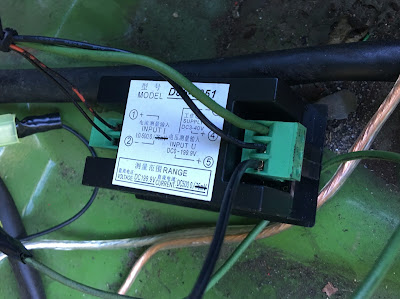There is new technology available to balance batteries which is very simple, modular, and powerful. I have experience with BMS systems that can only balance at the top (when fully charged) and can only balance batteries that are almost perfectly in sync. When using some older batteries and newer batteries together in one pack, these type of balancers do not function as intended and in my experience do not fully charge the pack. They try to burn off some current from the high cells but can't keep the voltage from tripping the high limit which shuts off charging for a minute. It then turns back on and the same thing happens. It never charges the stronger cells that sit at a lower voltage. Typical BMS systems can only burn off 0.5 Amps per cell to top balance. This is wasted energy and heats up the batteries. The new battery balancer moves energy from one battery to another continuously and can move up to 10 Amps per cell. This is obviously a more powerful and flexible solution.
Additionally, you no longer need a 12v accessory battery, you can just tap 4 of the lithium cells and they will not discharge to become out of sync, they will be continuously balanced with the rest of the pack.
Here is what the older style BMS cell balancers look like. They have an integrated resistor that can burn off 0.5 Amps from the batteries to try to balance them.
 |
| Elite Power Solutions cell balancers on GBS Lithium cells |
 |
| Elite Power BMS display cells |
 |
| Battery Balancers |
Product link: http://www.gne2010.com/4s-8s-gne-active-battery-balancer-equalizer-bms-for-lithium-batteries
1s (one cell) unit available on ebay:
Multiple 1s units can be connected together for any size battery pack.
Here is my final arrangement, this can handle 48 cells.
 |
| Six 8s battery balancers connected to terminal strips |
This shows the balance wires connected to the Chevy Volt Cells
 |
| Chevy Volt battery with balance connections |
 |
| 2 kWh Chevy Volt Battery with bad cell |
Here is a video showing how the bad cell was found. It showed no voltage and it was swollen.
Unfortunately I will have to buy some used 2 kWh Chevy Volt battery packs to replace the bad cell since one cell cannot be swapped out, the entire 12 cell module needs to be replaced.
Ebay: used 2 kWh battery packs
























